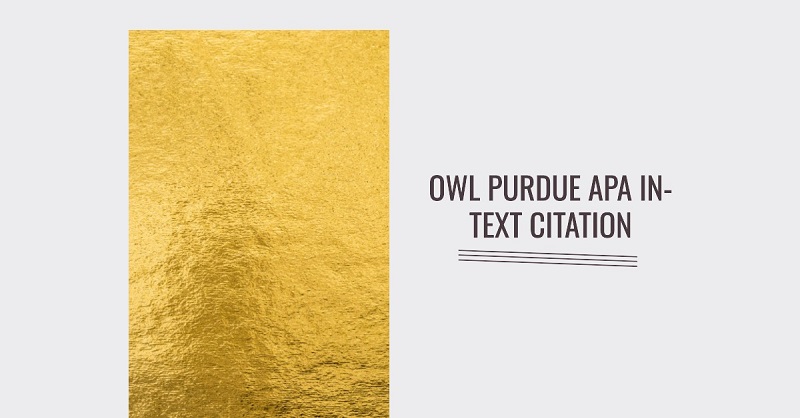In the academic world, proper citation is essential for establishing credibility and acknowledging the contributions of others. APA (American Psychological Association) style is one of the most common citation formats used, especially in social sciences. Purdue University’s Online Writing Lab (OWL) is a venerable resource in this regard. This article provides an overview of how to use the OWL Purdue as a guide for APA in-text citation.
What is APA Style?
Before diving into OWL Purdue, it’s crucial to understand what APA style is. APA style is a set of rules for formatting papers and essays, often used in psychology, education, and other social sciences. It guides how to structure your paper, how to cite your sources, and how to prepare your references page.
Why Use OWL Purdue?
OWL Purdue is a free online resource that offers guidelines, tips, and examples for various citation styles, including APA. It’s maintained by the Writing Lab at Purdue University. Its credibility and easy-to-understand examples make it a popular resource among students and educators alike.
APA In-text Citations: The Basics
In-text citations are brief references within your text that indicate where you have used someone else’s ideas or words. They typically include the author’s last name and the year of publication and should correspond to an entry on the references page.
There are two main types of APA in-text citations:
- Parenthetical Citation: This is when the author’s name and year of publication appear in parentheses. For example: (Smith, 2020).
- Narrative Citation: This is when the author’s name is part of the sentence and only the year appears in parentheses. For example: Smith (2020) discusses the implications of…
Using OWL Purdue to Understand APA In-text Citations:
Here’s how you can utilize OWL Purdue to learn APA in-text citations:
- Visit the Website: Go to the OWL Purdue website and locate the APA guide.
- Access In-text Citation Guidelines: Within the APA guide, find the section dedicated to in-text citations.
- Study Examples: OWL Purdue provides numerous examples for various scenarios – from one author to multiple authors, from books to online sources.
- Note Exceptions: Understand the unique cases such as citing personal communications or unknown authors.
- Utilize Supplementary Resources: OWL Purdue also provides additional resources like sample papers, which can help you to understand how in-text citations work in practice.
Tips for Effective APA In-text Citations:
- Be Concise: Avoid including unnecessary information. Typically, the author’s last name and the year of publication are sufficient.
- Stay Consistent: Ensure that your in-text citations correspond with the references listed at the end of your paper.
- Paraphrase Wisely: When paraphrasing, it’s still essential to credit the original author. OWL Purdue can guide you on how to do this effectively.
Conclusion:
Using proper APA in-text citations is paramount in academic writing. The OWL Purdue is an excellent resource for understanding and applying APA style effectively. By studying examples and adhering to the guidelines provided, you can enhance the credibility of your work and contribute positively to the academic conversation.










